As a traditional Chinese printing and dyeing method, plant dyeing is an important intangible cultural heritage in China. Not only does it exude Eastern beauty, but it also showcases cultural confidence, historical heritage, and brand value. With consumers' increasing pursuit of sustainability, ecological protection, and natural beauty, plant dyeing is not only favored by international renowned fashion brands like Dior but also warmly welcomed by underwear and baby textile brands that emphasize skin-friendly, care, and health aspects. It has broad market prospects.
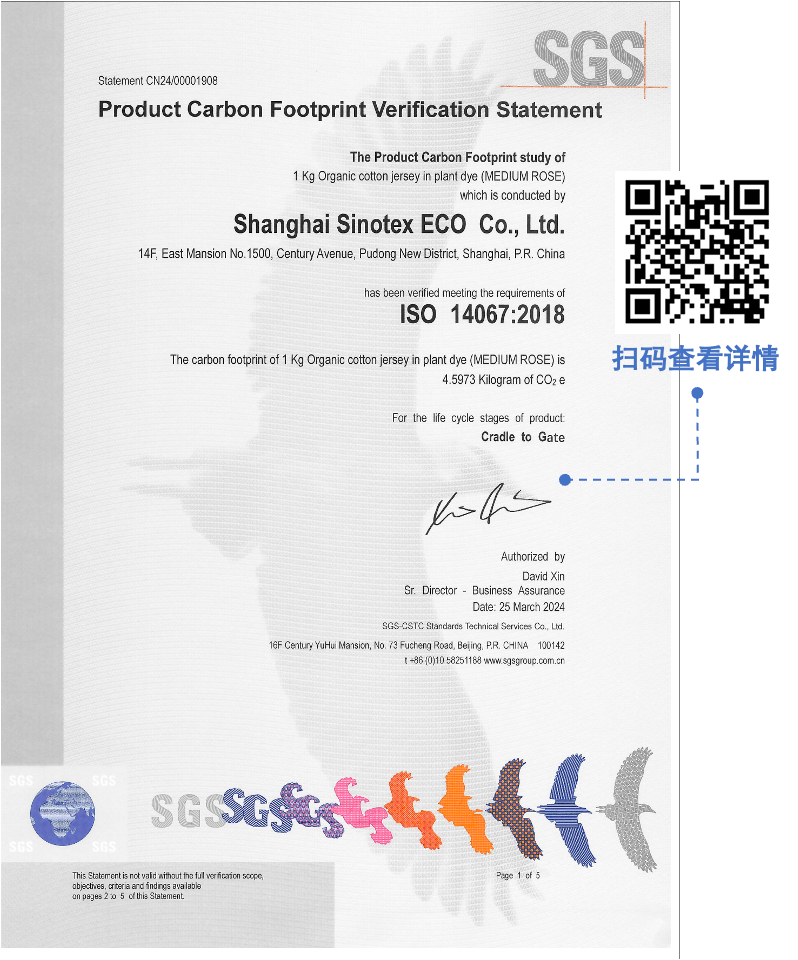
Carbon Newture assists Sinoteco in obtaining authoritative carbon footprint certification
Recently, with the assistance of Carbon Newture, Shanghai Sinotexs Eco-Technology Co., Ltd. has completed the carbon footprint assessment for three types of plant-dyed organic cotton and spandex fabrics they produce. This assessment was conducted using the internationally recognized carbon footprint accounting standard ISO 14067:2018, and they have obtained the authoritative carbon footprint certification from the third-party organization SGS.
By integrating low-carbon sustainability into the brand concept of "Inspired by Nature", Carbon Newture helps clients build a lower-carbon plant dye industry chain, creating a differentiated competitive advantage.
01. Plant dye
"Plant dyeing", also known as "vegetable dyeing" or "natural dyeing", refers to the process of extracting dyes from various parts of naturally grown plants such as flowers, fruits, roots, stems, and leaves (e.g., madder, turmeric, indigo) to dye fibers and fabrics. During the dyeing process, minimal to no chemical additives are used, thereby avoiding the pollution issues associated with chemical dyes. Some plant dyes are derived from medicinal herbs, such as wormwood for yellow dye, safflower for red dye, and indigo plant for blue dye. Not only do these dyes produce elegant colors, but they also have skin-nurturing, antibacterial, and insect-repellent properties. Additionally, dye-producing plants absorb carbon dioxide from the air during their growth, making them a small carbon sink.
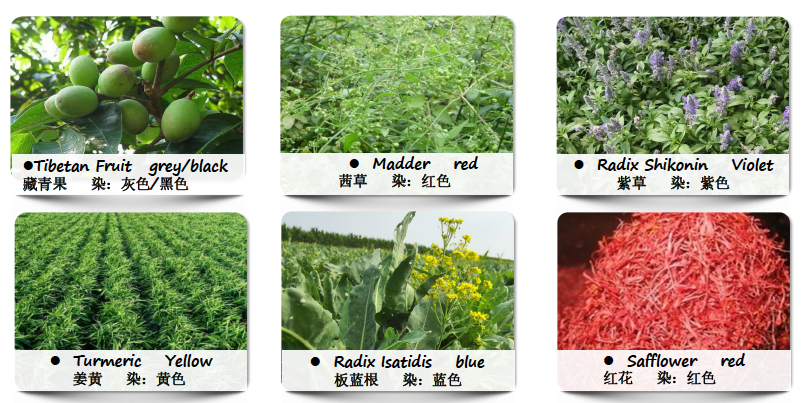
部分染色植物及对应可染颜色,图源:上海中纺联和生态科技有限公司
With the continuous improvement of living standards and increasing concern for the ecological environment, consumers' choices of textiles are no longer limited to the style and functionality of products but are more focused on their potential values—health, environmental protection, culture, personality, etc.
Plant dyeing embodies multiple meanings such as health, environmental protection, culture, and aesthetics. Fabrics dyed with plant dyes exhibit a natural artistic style and excellent ecological compatibility. Therefore, there is a growing demand in the market, especially in the mid-to-high-end segments.
02. NATUROOT,leader of the low-carbon consumption trend
With the increasing prominence of environmental issues, concepts such as "low-carbon green consumption" and "sustainable development" continue to integrate into the public's consumption mindset, giving rise to the trend of low-carbon consumption. Data shows [1] that over 70% of consumers believe that low-carbon consumption can help achieve dual carbon goals. In a demand-driven market, NATUROOT brand's plant dye products, with their unique natural advantages, have captured brand attention and secured a stable position among numerous fabrics.
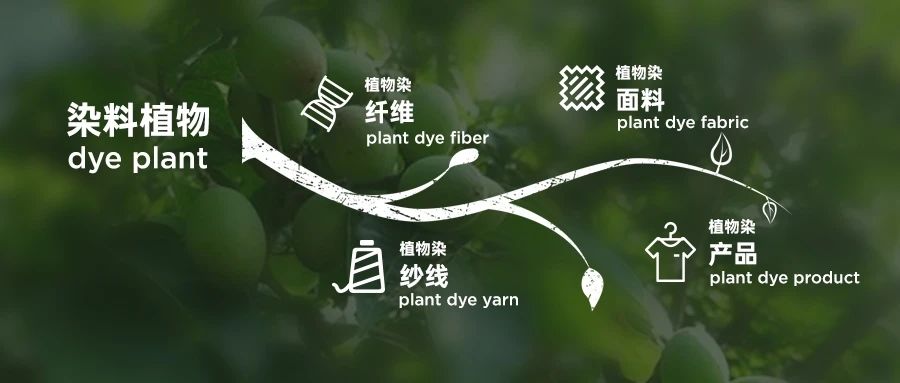
created by Carbon Newture, the base image is of indigo fruits that can be dyed black or gray
NATURE+ROOT=NATUROOT embodies the concept of "inspired by nature". NATUROOT is the plant dyeing brand under Shanghai Sinotexs Eco-Technology Co., Ltd. (hereinafter referred to as "Sinoteco"). Sinoteco is a professional environmental fabric research and production manufacturer specializing in innovation in environmental protection, emission reduction, reuse, and recycling. The company is committed to becoming a leader in China's plant-based environmental dyeing industry chain, actively promoting the industrialization, standardization, and internationalization of plant dyeing.
The following image is the NATUROOT showroom of Sinoteco, showcasing a Chinese aesthetic inspired by nature, showing respect for nature and a return to natural beauty.
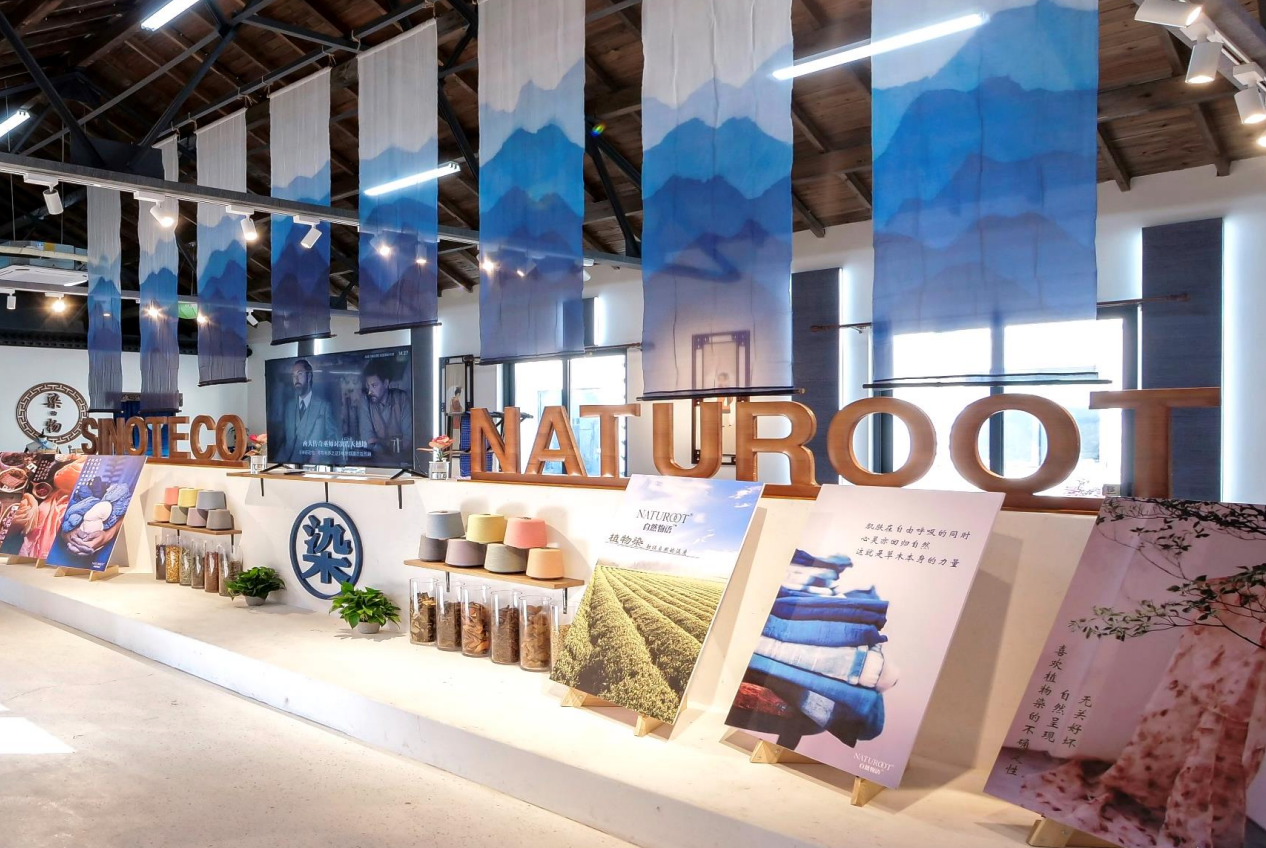
NATUROOT brand showroom, image source: Sinoteco
In addition, on Chongming Island, the third largest island in China, Sinoteco has established a plant dyeing demonstration base. The base cultivates a variety of dyeing plants for pigment extraction experiments and applications. The base also features a plant dyeing showroom, plant dyeing workshops, etc., for visitors to tour, learn, and experience the romance and beauty of this traditional craft of plant dyeing.

Sinoteco's plant dyeing demonstration base established on Chongming Island.
03. Calculating Carbon Footprints, Practicing the Way of Nature
In this instance, Sinteco selected the core product of NATUROOT, the plant-dyed organic cotton and spandex sweat fabric (including the three colors shown in the figure below), as the object of carbon footprint calculation. This plant-dyed fabric is exported overseas and has been a long-term supplier to brands like COSTCO, earning the trust of brand owners.
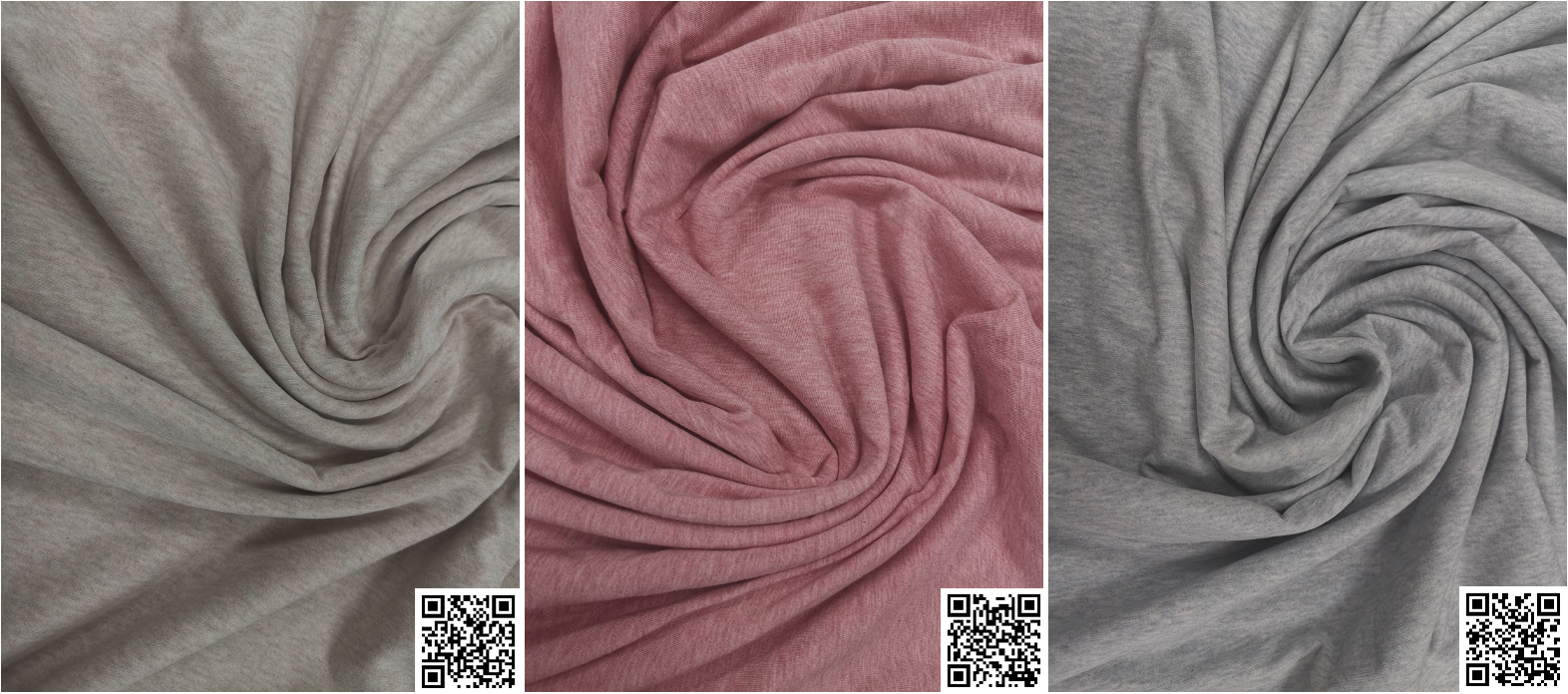
The three types of plant-dyed organic cotton and spandex sweat fabrics under the NATUROOT brand, along with their carbon footprint QR codes
Through the product carbon footprint calculation and certification service provided by Carbon Newture, and utilizing the Carbon Newture digital carbon management platform, Sinoteco has completed the carbon footprint calculation for the above three core products. They have obtained the carbon footprint certification certificate issued by the third-party organization SGS, ensuring the compliance and authority of the carbon footprint data.
Subsequently, Carbon Newture assists Sinoteco in uploading product carbon footprint data to the International Carbon Disclosure Platform for Textile and Apparel, ensuring the traceability of carbon data and promoting carbon data sharing across the plant dyeing industry chain. This initiative contributes to shaping a more transparent and healthy low-carbon consumption market.
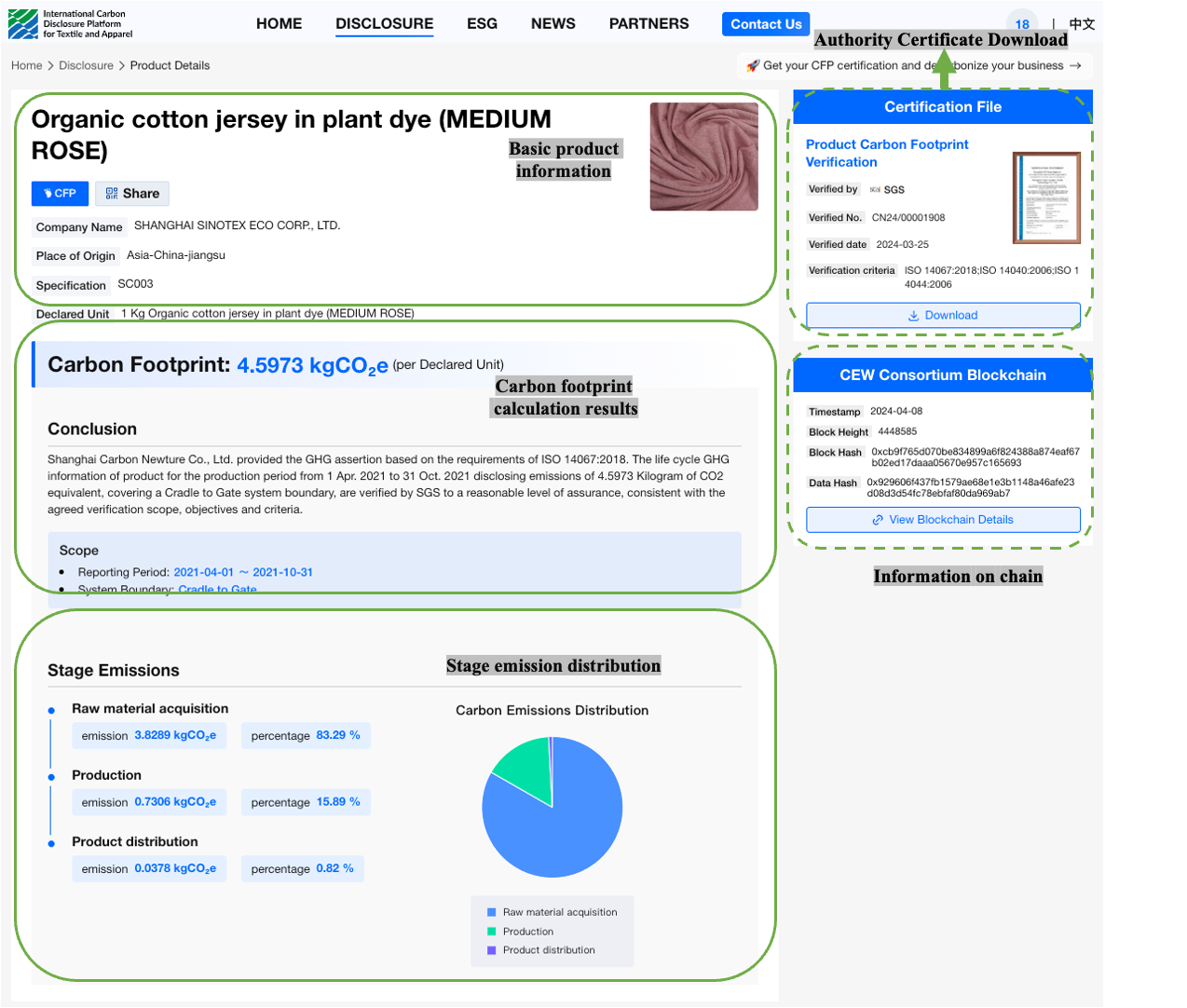
Derived from nature, returned to nature. During their growth, dye-producing plants also act as "carbon-capturing organisms." Naturally derived plant dyes exhibit excellent biodegradability and environmental friendliness. As a professional environmental fabric research and production manufacturer, Sinoteco has always adhered to its environmental protection principles, contributing upstream efforts to the low-carbon clothing supply chain. Carbon Newture Technology will continue to serve enterprise low-carbon development through technology and innovation, jointly creating a sustainable future.
Reference:
[1] 商道纵横与界面新闻连续联合发布的《2021中国可持续消费报告》